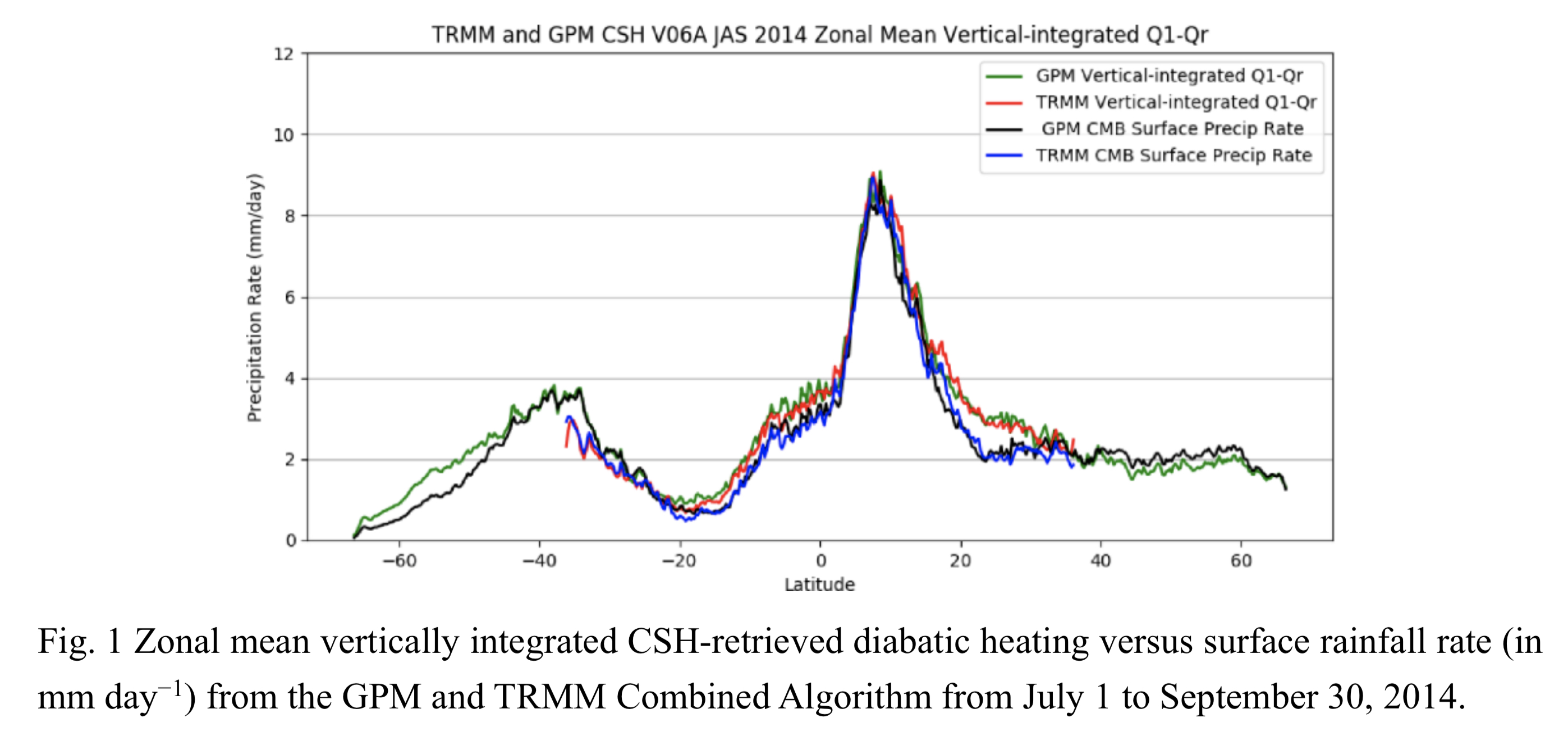Graphical Abstract
Tao, W.-K., S. Lang, T. Iguchi, and Y. Song, 2022: Goddard latent heating retrieval algorithm for TRMM and GPM. J. Meteor. Soc. Japan, 100, 293 - 320.
Special Edition on Global Precipitation Measurement (GPM): 5th Anniversary,
https://doi.org/10.2151/jmsj.2022-015
Graphical Abstract
Published
Plain Language Summary: The Goddard Convective-Stratiform Heating (CSH) algorithm has been developed to retrieve latent heating (LH), i.e., energy release or absorption through a phase change between water vapor and cloud in the atmosphere, in support of the Tropical Rainfall Measuring Mission (TRMM) and Global Precipitation Measurement (GPM) missions. Since LH cannot be measured directly with current measurement techniques, numerical model simulations resolving clouds are used to examine the relationships between latent heating and rainfall, which is easily measurable. This paper describes the current version6 of CSH and its differences/similarities versus the previous version5 of CSH. Long-term CRM simulations were conducted to identify the impact of the differences in the CRM settings for the versions 5 and 6 on LH structure/profiles.
Highlights:
- These are the two major differences (convective and stratiform separation method and model resolution) in GCE model simulations for the current V6 CSH and the previous V5 CSH. The GCE-simulated total heat source profile and its convective and stratiform component are almost identical for two different model resolutions (1000 and 200 m) using the same convective- stratiform separation method. However, The GCE-simulated vertical profile of heating source in the convective and stratiform region is sensitive to the convective-stratiform separation method.
- The CSH three-month and zonal mean equivalent surface rain rates are in good agreement with the Combined rain rates over the Inter Tropical Convergence Zone region; the agreement is best over the ocean. CSH three-month and zonal mean equivalent surface rain rates are larger than the Combined rain rates over land in both the tropics and subtropics. The net result is that V6 has significantly reduced biases over nearly every latitude compared to V5 and is therefore, in much better overall heat balance.







